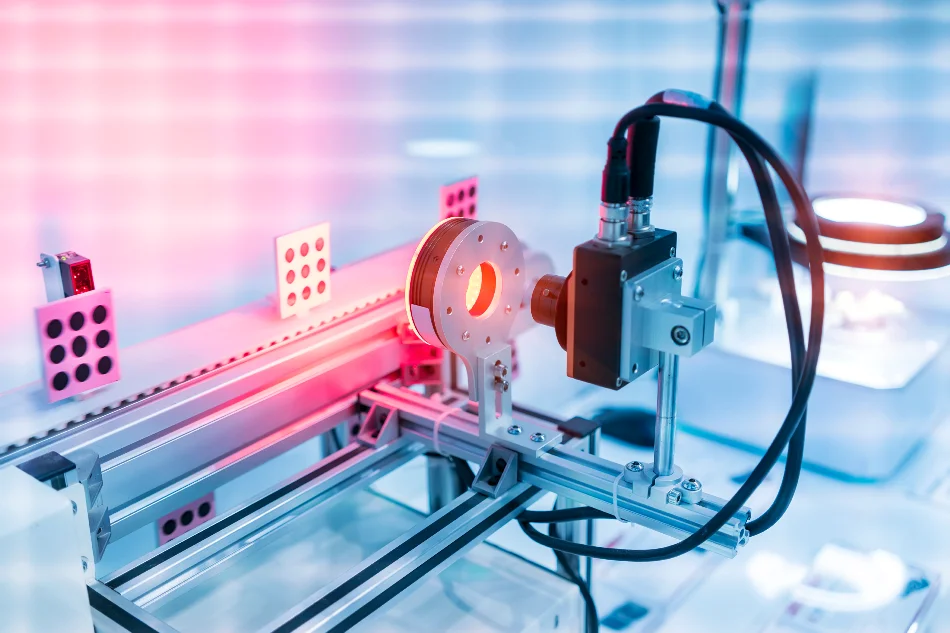Introduction
The FMCG industry caters to a diverse range of products, including food, beverages, toiletries, and household essentials. To maintain consumer trust and comply with stringent quality regulations, manufacturers are constantly seeking innovative ways to enhance quality control processes. Enter AI-based Visual Inspection Systems – a game-changer in the world of quality assurance.
The Traditional Quality Control Challenges
Before the advent of AI-based systems, quality control in FMCG primarily relied on manual inspection, which was time-consuming and prone to human errors. Human inspectors often struggled to detect subtle defects or contaminants, leading to the occasional subpar product slipping through the cracks. This inefficiency had an impact on both product quality and production costs.
Enter AI-Based Visual Inspection Systems
AI-Based Visual Inspection Systems are designed to address the shortcomings of traditional quality control methods. These systems leverage cutting-edge technologies such as computer vision, machine learning, and deep learning algorithms to scrutinize products with unmatched precision.
How AI-Based Visual Inspection Works
AI-based systems use high-resolution cameras to capture images or videos of products as they move along the production line. These images are then analyzed in real-time by powerful algorithms capable of identifying even the slightest imperfections. Defective products are immediately flagged for removal or corrective action.
The Role of AI in Visual Inspection Systems
AI-based visual inspection systems utilize advanced computer vision algorithms to analyze images or videos of products. These systems can identify defects, inconsistencies, or anomalies in real-time, making them invaluable tools in FMCG production. Here’s how AI is reshaping quality control in FMCG:
- Speed and Efficiency: AI systems can process thousands of product images per minute, far surpassing human capabilities. This speed allows for real-time monitoring of the production line, reducing the chances of defective products reaching consumers.
- Consistency: Unlike humans, AI systems don’t suffer from fatigue or distractions. They consistently apply predefined quality criteria, ensuring uniformity in inspection, regardless of the time of day or workload.
- Precision: AI algorithms are capable of detecting even the tiniest defects that might be missed by the human eye. This precision is crucial in maintaining high product quality and safety standards.
- Reduced Costs: While initial implementation may require an investment in AI technology, the long-term cost savings are substantial. Fewer defective products mean reduced waste and fewer product recalls, which can be costly in terms of both finances and brand reputation.
- Data-Driven Insights: AI systems generate vast amounts of data during inspections. This data can be analyzed to identify trends, root causes of defects, and areas for process improvement, enabling FMCG companies to continuously enhance their quality control procedures.
- Adaptability: AI-based inspection systems can be easily reconfigured to accommodate different product types, sizes, and inspection criteria. This adaptability makes them suitable for a wide range of FMCG products.
Benefits of AI-Based Visual Inspection
- Enhanced Accuracy: AI-based systems boast a level of accuracy that surpasses human capabilities. They can detect defects as small as a fraction of a millimeter, ensuring only flawless products make it to the market.
- Speed and Efficiency: Visual inspection systems operate at lightning speed, ensuring that production lines can maintain high throughput without compromising on quality.
- Cost Savings: By reducing the need for manual inspection, businesses can save significantly on labor costs and minimize the risk of product recalls.
Implementation Challenges
While AI-based visual inspection is a powerful tool, its successful implementation comes with its own set of challenges. These include the initial investment in technology, the need for skilled personnel to operate and maintain the system, and potential integration issues with existing production lines.
Future Prospects
The future of quality control in FMCG undoubtedly lies in AI-based Visual Inspection Systems. As technology continues to advance, these systems will become even more sophisticated, enabling businesses to maintain the highest quality standards and meet the ever-evolving demands of consumers.
Conclusion
In conclusion, the FMCG industry is undergoing a profound transformation in quality control, thanks to AI-based Visual Inspection Systems. These systems offer unparalleled accuracy, speed, and efficiency, ensuring that consumers can trust the products they purchase. While challenges exist, the benefits far outweigh the initial hurdles, making AI-based visual inspection a must-have for any FMCG manufacturer.
Incorporating AI-based Visual Inspection Systems into your FMCG production line is a smart move toward ensuring the highest quality standards and staying ahead in a competitive market. Embrace the future of quality control and revolutionize your FMCG business today!
FAQs
Q1: Are AI-based Visual Inspection Systems expensive to implement? AI-based systems require an initial investment, but the long-term cost savings and quality improvements justify the expense.
Q2: Can AI-based systems replace human inspectors entirely? While they enhance quality control, human oversight is still valuable for certain aspects of production.
Q3: Are these systems suitable for all types of FMCG products? Yes, AI-based visual inspection can be tailored to suit a wide range of FMCG products, from packaged foods to cosmetics.
Q4: How do I choose the right AI-based inspection system for my business? Consider factors such as the type of product, production volume, and budget when selecting a system.


